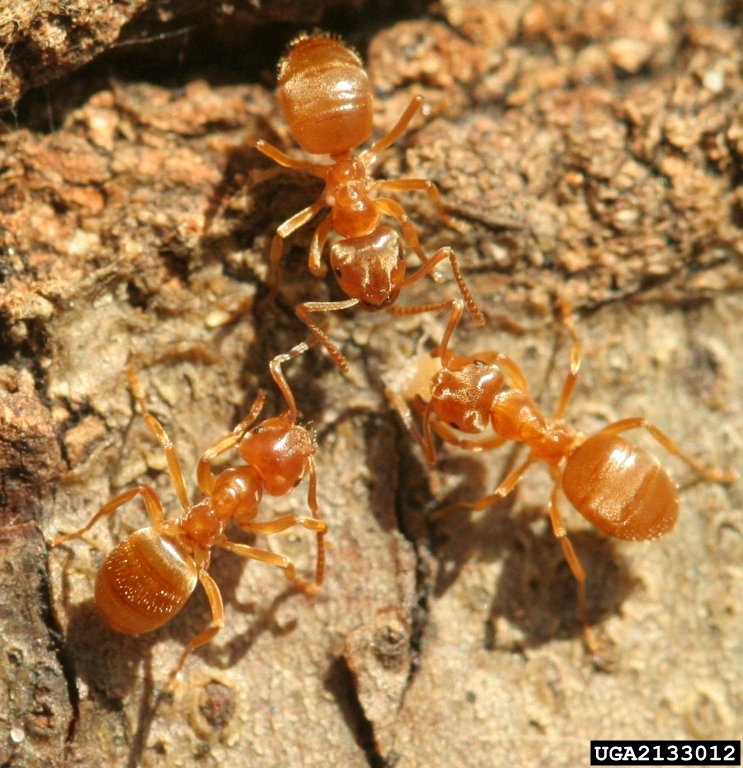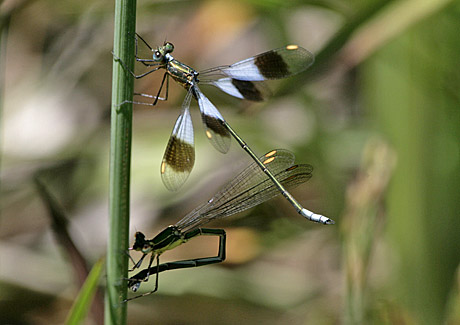post 2 of 2
6. Bluefin Tuna
The Atlantic bluefin tuna (Thunnus thynnus) is a large migratory fish found in the western and eastern Atlantic and the Mediterranean Sea. Bluefin tuna is the source of highest grade sushi. Bluefin tuna fisheries are near collapse and the species at serious risk of extinction if unsustainable fishing practices in the Eastern Atlantic and Mediterranean are not stopped. A temporary ban on the global trade of bluefin tuna would allow the overexploited species to recover. WWF is encouraging restaurants, chefs, retailers, and consumers to stop serving, buying, selling, and eating endangered bluefin tuna until this amazing species shows signs of recovery.
7. Mountain Gorilla
Scientists consider mountain gorillas (Gorilla beringei beringei) to be a critically endangered gorilla subspecies, with about 720 surviving in the wild. More than 200 live in the Virunga National Park, located in the eastern part of the Democratic Republic of Congo, bordering Rwanda and Uganda. War has been waged in areas around the park, with gorillas subject to related threats such as poaching and loss of habitat. Conservation efforts have led to an increase in the Virunga population by 14 per cent in the last 12 years, while the mountain gorillas other home, the Bwindi Impenetrable Forest in Uganda, has experienced population increases of 12 per cent over the past decade. Despite this success, the mountain gorillas status remains fragile, and WWF is working to save the great apes forest habitat in the mountains of the heart of Africa
8. Monarch Butterfly
Every year millions of delicate monarch butterflies (Danaus plexippus) migrate from North America to their winter habitat in Mexico. A well conserved and protected high-altitude pine and fir forest in Mexico is essential for the survival of the overwintering of monarchs, which has been recognized as an endangered biological phenomenon. The protection of its reproductive habitats in the United States and Canada is also crucial to saving this species migration, one of the most remarkable natural phenomena on the planet. WWF, in collaboration with the Mexican Fund for the Conservation of Nature, has designed an innovative conservation strategy to protect and restore the Monarch butterflies wintering habitat in Mexico, so butterflies are protected from extremes weather and other threats. WWF is also supporting local communities to establish trees nurseries that are reintroduced to the monarch butterfly reserve, creating at the same time new sources of income for the owners of the monarch forests.
9. Javan Rhinoceros
Listed as Critically Endangered on the IUCN Red List (2009), the Javan rhino (Rhinoceros sondaicus) is considered to be one of the most endangered large mammals in the world with only two populations existing in the wild, for a total number of less than 60 animals. Highly prized as a commodity in traditional Asian medicine, Javan rhinos have also been brought to the verge of extinction by the conversion of forest habitat to farmland. WWF has been involved in protection and conservation of the Javan rhino since 1998, supporting forest rangers to undertake increased patrolling and protection activities, conducting surveys of the rhino population, raising awareness of the importance of the rhinos to local communities, and supporting park management. Last month, highly trained sniffer dogs were used to search for traces of the extremely rare and endangered Vietnamese Javan Rhinoceros, of which no more than a dozen are thought to exist. These samples will be analysed to better understand the gender mix and whether this small population has a chance of survival.
10. Giant Panda
An international symbol of conservation since WWFs founding in 1961, the giant panda (Ailuropoda melanoleuca) which numbers around 1,600 in the wild, faces an uncertain future. Its forest habitat in the mountainous areas of southwest China has become fragmented, creating a number of small and isolated populations. WWF has been active in giant panda conservation for nearly three decades by working working with the Chinese government to protect habitats through the creation of reserves and to help local communities become less dependent on forest resources. Over half of the habitat where pandas live is now protected, and corridors are being established to connect key panda populations. But the 1,600 remaining wild pandas are still living in over 20 geographically separate areas, and infratructure development is on the increase, so theres still much more to be done.
where oh where do we start





